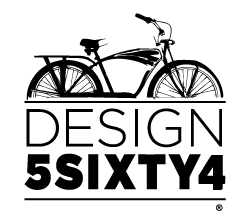Understanding your demographics is important to the choices you make for marketing, visual communications, along with many other elements that tie the design into your work. It’s business, baby.
Here, we’ll cover a bit about what you know already when it comes to demographics, and dive a little deeper about what you may be missing in your research.
Demographics or demographic data refers to selected population characteristics as used in government, marketing or opinion research or the demographic profiles used in such research.
…or otherwise, statistical data relating to the population and particular groups within it.
Commonly-used demographics include
-
-
- race
- age
- income
- disabilities
- mobility (in terms of travel time to work or the number of vehicles available)
- educational attainment
- homeownership
- employment status
- location
-
Something is missing there, that’s a lot of important information and necessary data… Demographics are leaving out emotional triggers. And in this digital age, people are looking for ways to feel human and connect. How are we keeping the human in the process?
Empathy.
Empathy feels like a buzz-word and has been picking up a lot of steam for a couple of years now, and for good reason. Studies show that almost ALL decisions are based on emotion. So, let’s ponder:
Are you connecting with your audience on a human level? One that makes them feel that you are the answer to their need at hand?

Design for Emotion.
We won’t dive too deep into the science, but in a snapshot, when we are making real-world decisions, our sensory sends a signal to our internal knowledge about what’s rewarding and what’s risky, what’s comforting, what’s rational, what’s emotional… the emotional care about what you want, and the rational care about the problem you’re solving. As mentioned above, emotion wins always and so our advice is to design for the emotion, provide content for the rationalizing. Think about the flow of response when someone is contemplating your service or product. It looks a little something like this:
-
We have our visceral response (immediate)
-
Followed by our behavioral response (reaction)
-
And then the reflective response (what changes within ourselves or the customer)
When you can set aside your own assumptions about the world, you can gain insight into your audience and their needs.

Next Steps.
Include in your demographic research, a focus on empathy and what triggers emotion—empathic design. When we pour some energy into research, empathy, and then immerse ourselves, we can better understand what triggers emotion in communication design and make empathy our goal. Then be sure to detach from the deep study so the work can be done.
If you’re feeling like you’re missing the mark somehow or just not connecting with your audience, this new insight you can learn can help guide your next strategy and visual communication that could plug that void you may have.
Final thoughts:



















